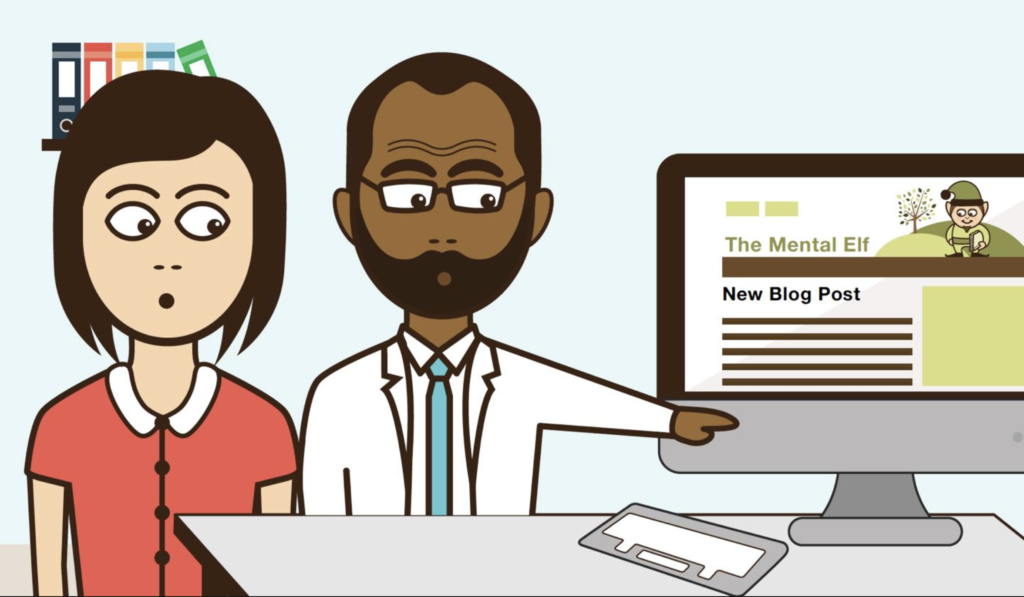
“Evidence-based medicine” means making decisions for patients that draw on the best available evidence of what works. However, achieving this in practice is known to be problematic. This is known as the “second translational gap” in research. The first gap is about translating scientific findings from the lab into things that promote health or fight disease in actual patients; from the microscope to the medicine (also called “bench to bedside”). The second translational gap is about how we then make that learning influence actual practice. How do we take the knowledge that a new treatment helps patients (or knowledge that something harms them) and make that part of the care they actually receive? Let’s call this ‘From the microscope to the medicine to the Making It Actually Happen’.
One obvious way to Make It Happen for the clinicians actually providing care, is for them to know what the evidence says and use this knowledge when they make decisions about treatment. This would be relatively straightforward if there was a manageable amount of evidence and the evidence stayed the same, but in reality, there’s a lot of information out there, and staying on top of it is a continuous task. Plus, there’s the problem that a lot of the evidence is locked away in paywalled journals (with services needing to pay expensive subscription fees to access the content) or simply made inaccessible and unusable because the clinically relevant information is masked behind impenetrable researcher-speak.
This is exactly the problem that the National Elf Service was set up to address. The aim of the National Elf Service is to make research more accessible to health and social care professionals and overcome the barriers mentioned above that may prevent frontline practitioners from implementing evidence in practice. Evidence is really important to us Elves, so we’re delighted to report on a study by Atkinson and colleagues that looks for evidence on how far this aim can be achieved. In this study, the authors wanted to evaluate whether active promotion of the National Elf Service in an NHS Foundation Trust would increase uptake of the service and increase use of evidence in clinical practice.

The National Elf Service aims to close the gap between research and practice.
Methods
- Five adult mental health community teams (AMHTs) and two early intervention services (EIS) took part, comprising 331 professionals in total. They were chosen as they reflected multi-disciplinary teams and because the service already received some research support (an embedded team of 7 research assistants). Mental health was the focus because the Mental Elf is the most established of the National Elf Service strands.
- The intervention was a brief (20 min) presentation to each AMHT and EIS team, delivered by National Elf Service Director/Chief Elf André Tomlin, who briefly explained how to use the service and it’s potential benefits.
- 102 staff (31%) attended the sessions, which took place as part of regular team meetings.
- A baseline and post-intervention survey asked about use of the National Elf Service and other evidence sources.
Results
- 110 out of 123 baseline responders (90%) felt their current clinical practice was informed by evidence.
- More than a third of respondents reported finding research evidence through primary research articles or systematic reviews. 97% said they kept up to date with current research.
- Use of the National Elf Service was low at baseline, with 80% reporting they hadn’t heard of the service.
- Post-intervention, 42 staff members (34.4%) reported using the National Elf Service, which is more than three times as many compared with baseline.
- Twenty-nine staff indicated that they felt the National Elf Service had influenced their practice and six reported that the service helped them answer specific clinical questions that arose in their practice.
- The National Elf Service was considered ‘very easy’ or ‘somewhat easy’ to use by 80% of respondents.

29 of the 42 staff members who reported using the National Elf Service said they felt the site had influenced their practice.
Conclusions
The authors say:
Although use of the National Elf Service was low, the large majority of staff felt their current clinical practice was informed by evidence, demonstrating that staff value the importance of evidence-based practice and see this as an essential part of their role…
The current study demonstrates that staff are engaged with EBM and those that used the National Elf Service felt it did, or could have the potential to impact on their clinical practice. However, barriers and challenges to engagement suggest more targeted efforts should be made to embed evidence-based practice into the working culture.
Limitations
- I think the authors missed a trick in not linking the pre and post surveys. The reason given is that they were anonymous, but there are ways of getting round this (you can give people a code, or use a psudeo-anonymous way of identifying like asking for their date of birth). This would have made full use of the longitudinal design by checking what the impact was for people who attended the sessions, rather than relying on self-report.
- The authors report that the face-to-face intervention was more effective than email at increasing uptake. However, given that lack of time was a reported barrier to engaging with the National Elf Service, is there a mismatch here with trying to use such time-intensive methods to increase uptake? Would alternative methods, such as having National Elf Service ‘champions’, a regular reminder system, or linking it more explicitly with continuing professional development, be more effective and potentially easier to implement?
- The presence of the embedded research team could have been discussed more. It wasn’t clear to me whether they did any active work following the presentations to encourage use, which could have inflated the results. Alternatively, the fact that staff had access to researchers may have decreased their need for a digital service like the National Elf Service. Ideally, the study would have included comparator groups who didn’t have the research team support.
- I was quite surprised by how high the reported levels of engagement with “primary sources” such as journal articles were. I think ‘engagement’ could be unpicked a bit here; do staff mean that they read the full articles, or the abstracts? I think a benefit of the National Elf Service is the evaluation of the quality of the evidence, not just reporting the findings, and I wonder how many staff regularly evaluate what they read (I may be hugely under-estimating staff here, and please tell me in the comments if so!)
- What is meant by staff ‘using’ evidence could also be unpacked. Does this mean following a guideline? Differentiating between treatments for individual patients? Awareness more widely of what evidence says is effective or not?
- For both of the above, more in-depth qualitative research could be helpful, though the survey format used here is appropriate for assessing broad impact across the large sample, so this isn’t a criticism of the study itself.
- The most damning methodological limitation is the failure to address whether André delivering the sessions dressed in full Elf regalia would have made any difference. I would like to see a multi-factorial design including whether having bells on his shoes increased or decreased use of the service. This is essential FOR SCIENCE.

With bells on! Surely this can’t be the future of evidence-based health information?
Conflict of interest
This Mental Elf blog presents the results of a study conducted by researchers at the Oxford Health NHS Foundation Trust. The intervention being evaluated in this study is the National Elf Service, which is developed and owned by Minervation Ltd, the company behind this website and all of the elf blogs including the Mental Elf. That’s pretty meta huh? Give us a shout if you don’t get it, or indeed if you want further details of the National Elf Service!
Forthcoming #EBMHchat hangout
Chief Elf André Tomlin will be joining lead author of this study Lauren Atkinson and other members of the Evidence Based Mental Health journal team in a live Google Hangout at 3pm BST on 13th October 2017. They will be discussing this paper and related matters. Do join them by watching the live YouTube stream and joining the discussion on Twitter at #EBMHchat.
Links
Primary paper
Atkinson LZ, Forrest A, Marriner L, Geddes JR, Cipriani A. (2017) Implementing tools to support evidence-based practice: a survey and brief intervention study of the National Elf Service across Oxford Health NHS Foundation Trust. Evidence-Based Mental Health 2017;20:41-45.
